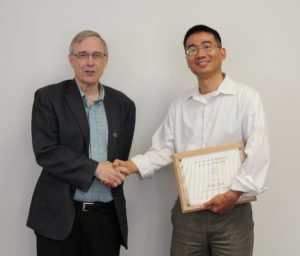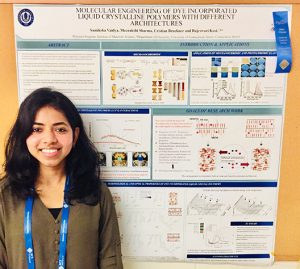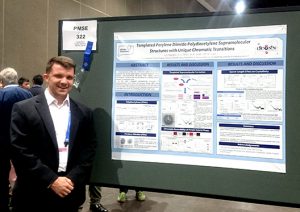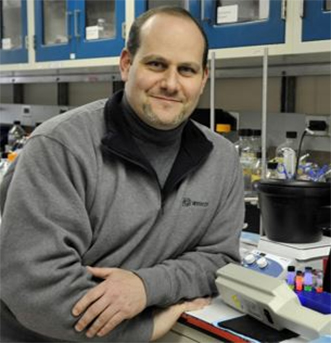To get started on your new site, take a look on the Aurora site for tips on how to get started.
Uncategorized
Members of Dr. Kasi’s Group Nominated for Best Poster at ACS Fall Meeting
Ian J. Martin and Samiksha Vaidya of Dr. Rajeswari Kasi’s research group recently attended the American Chemical Society (ACS) Fall 2019 National Meeting & Exposition in San Diego, CA and presented posters entitled “Templated perylene diimide-polydiacetylene supramolecular structures with unique chromatic transitions” and “Molecular engineering of dye incorporated liquid-crystalline polymers with different architectures”, respectively. Each of their presentations were highlighted as distinguished poster nominees in the Polymeric Materials: Science and Engineering (PMSE) division.
Dr. Luyi Sun Elected as Member of CASE

Dr. Luyi Sun, Director of the IMS Polymer Program and Professor of Chemical and Biomolecular Engineering, was inducted into the academy at its 44th Annual Meeting in May 2019
Election to CASE is made on the basis of scientific and engineering distinction achieved through significant contributions in theory or applications, as demonstrated by original published books and papers, patents, the pioneering of new and developing fields and innovative products, outstanding leadership of nationally recognized technical teams, and external professional awards in recognition of scientific and engineering excellence.
Dr. Sun’s publication credits include such distinguished journals as Scientific Reports, Nature Communications, Science, and Science Advances, as well as holding several patents related to his research. His work has been featured in articles at Smithsonian.com, R&D Magazine, and Plastics Technology among other publications. Dr. Sun also serves as advisor to the UConn student chapter of the Society of Plastics Engineers (SPE).
IMS Director Dr. Steven L. Suib, also a CASE member elected in 2012, congratulated Dr. Sun on his membership and accomplishments at a celebration at IMS.
Intriguing Flexible Devices Based On Mechanoluminescence

Mechanoluminescence (ML), also called triboluminescence (TL), refers to the phenomenon/process that materials could emit light under mechanical stimuli, e.g., friction, stretch, compression, impact, etc. The ML materials could utilize the ubiquitous mechanical energy in daily life to generate light emissions, avoiding the requirement of an artificial photon- or electron-excitation source as that in photoluminescence (PL) or electroluminescence (EL). Therefore, ML materials show great advantages in energy saving and environmental protection.
For practical applications, ML crystals or powders are required to composite with bulk matrices to generate structural non-destructive ML. Among the fabricated ML composites, elastomer-based ones have attracted increasing attention owing to the rising requirement of incorporating stress sensing characteristic into flexible/wearable devices. The present ML elastomer composites mainly employ transition metal ion doped sulfides (TM-sulfides) as the luminescent components because of their intense ML intensity. However, the TM-sulfides usually have poor chemical stability and may cause severe environmental pollution as well as lack of rich emission color.
Theoretically, rare earth doped oxides (RE-oxides) are promising alternatives because of their high chemical stability, nontoxicity, and abundant energy levels. It is essential to develop efficient and ideally multicolored ML of RE-oxide based elastomer composites, so that flexible devices may possess remarkable and environmentally friendly mechanical responsive optical characteristics. Read the full story at Science Trends.


